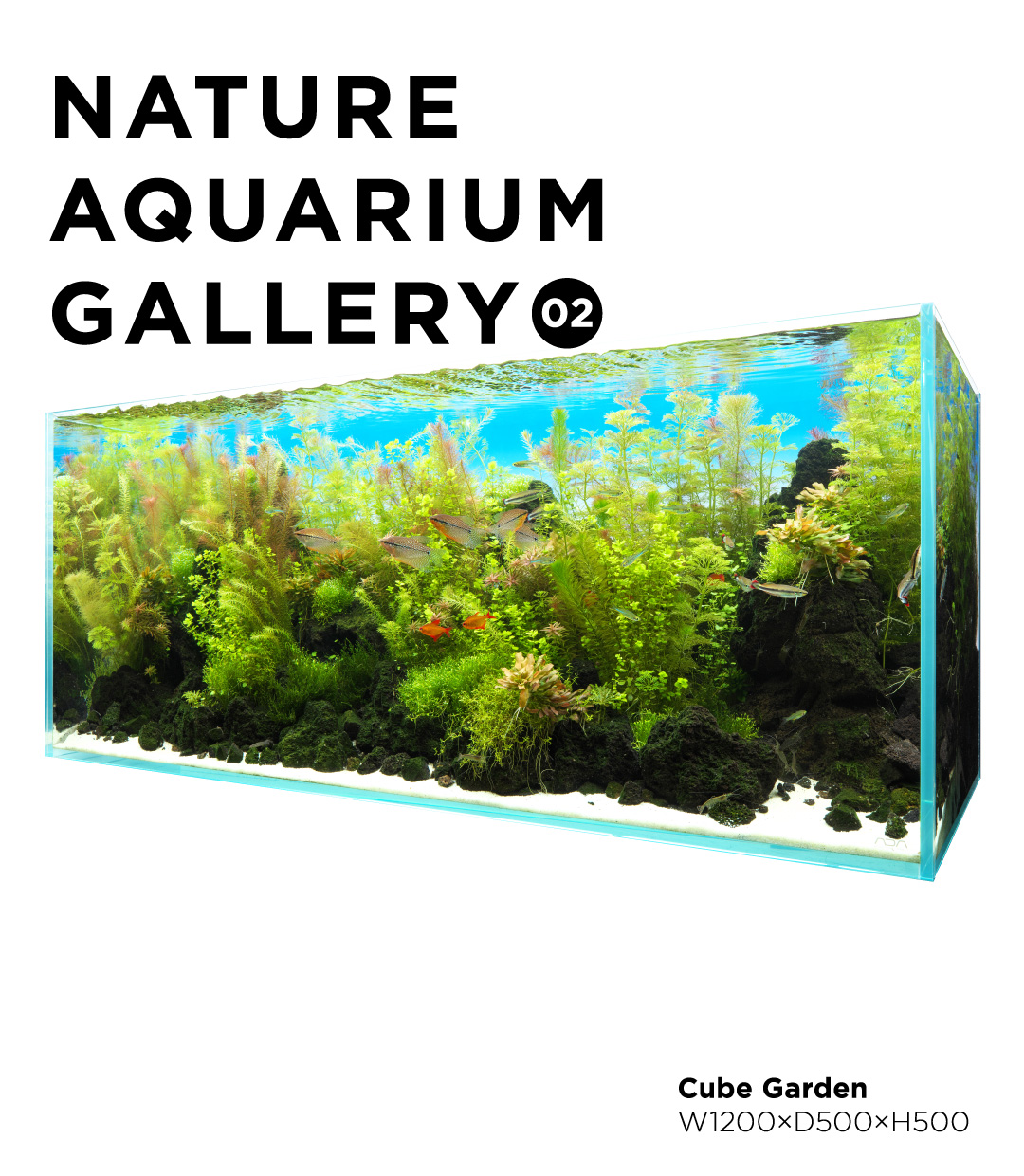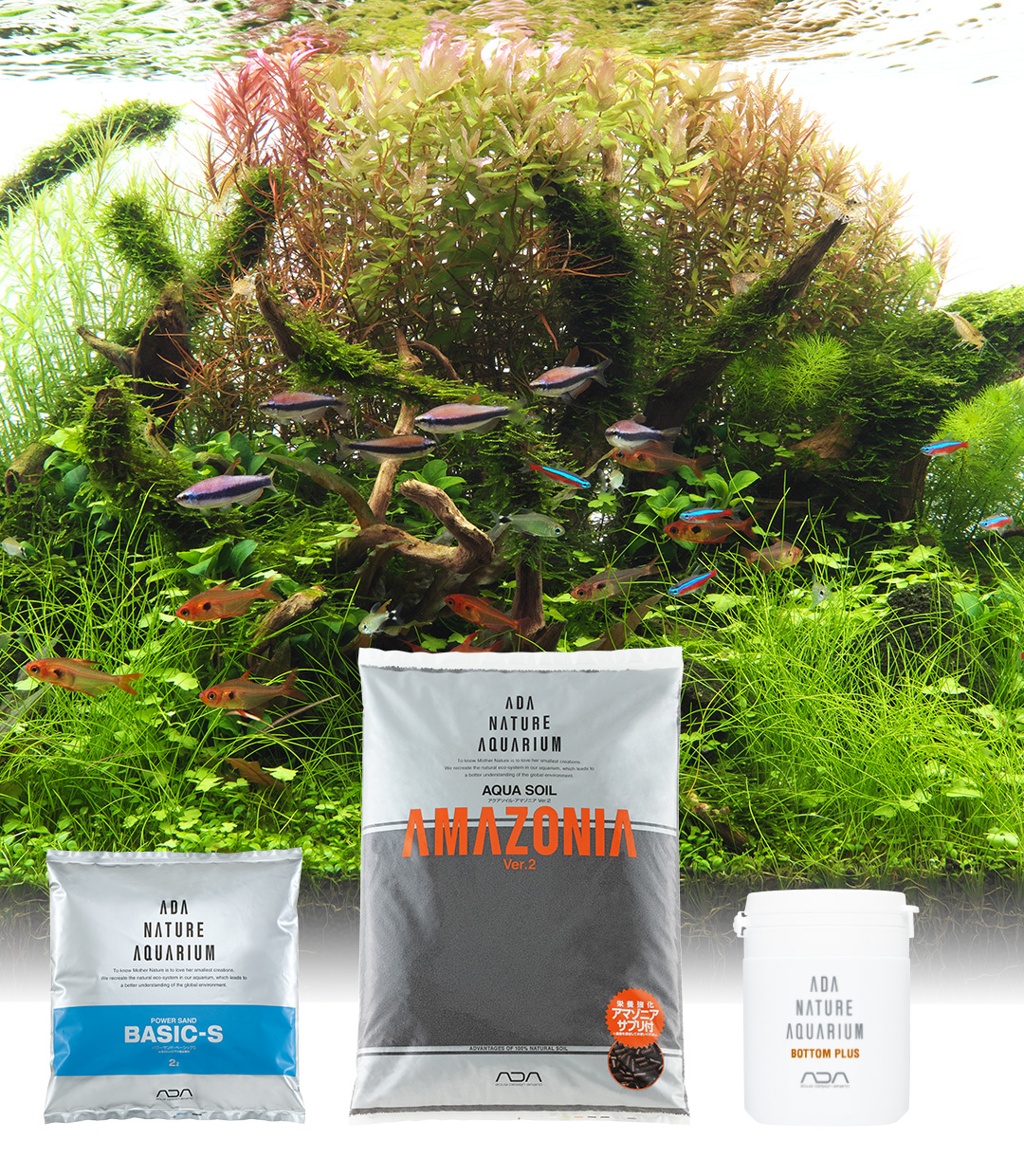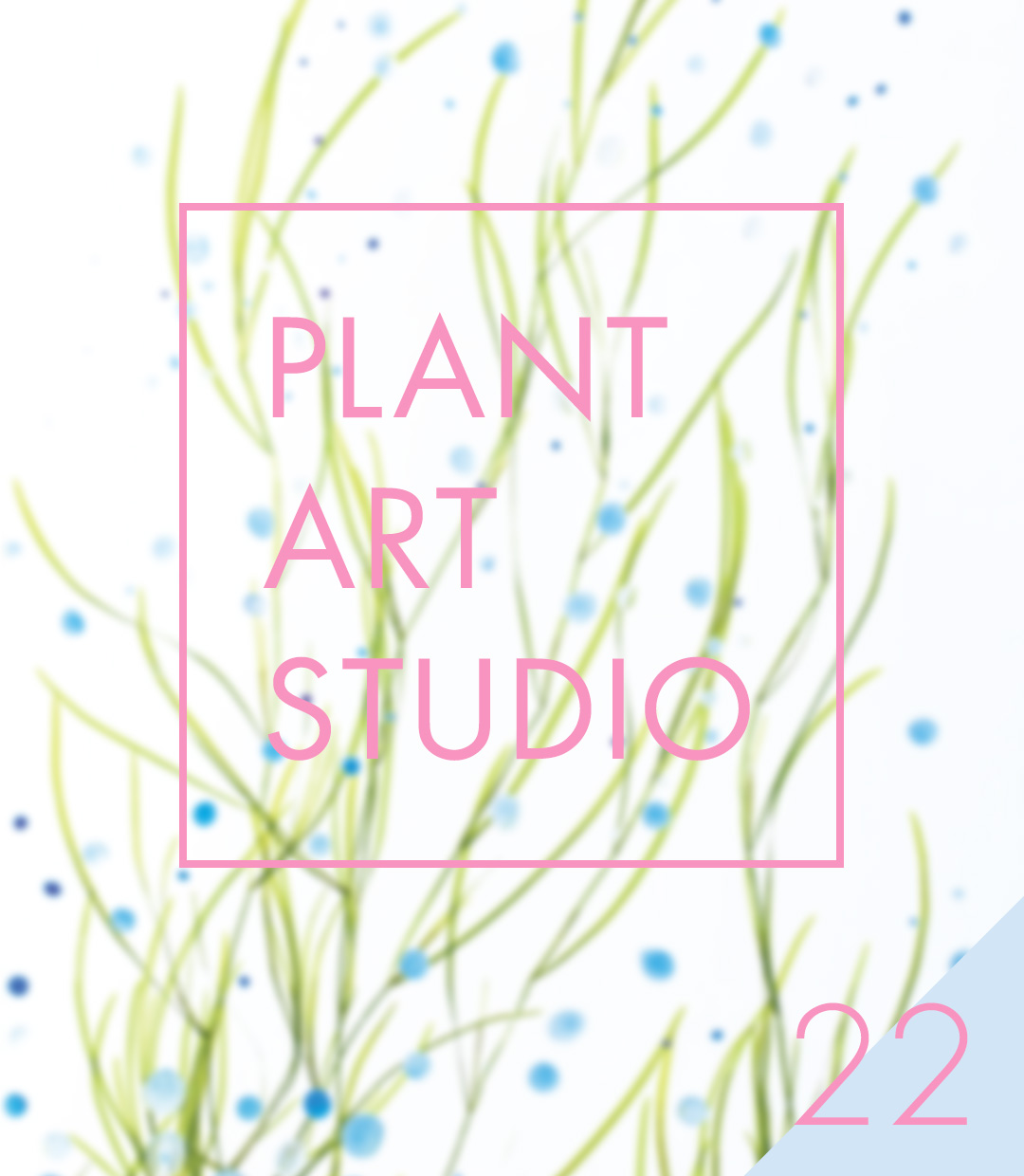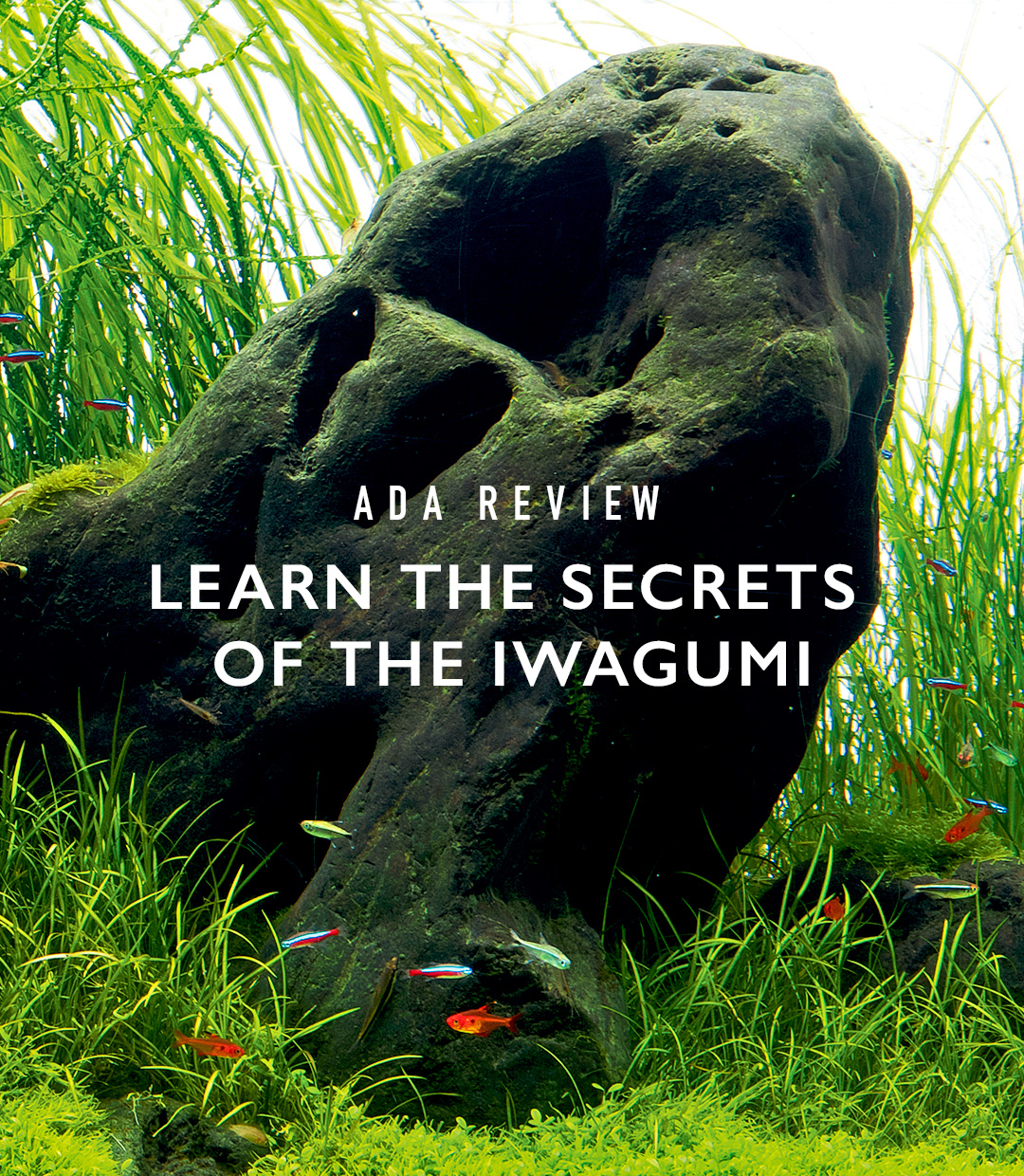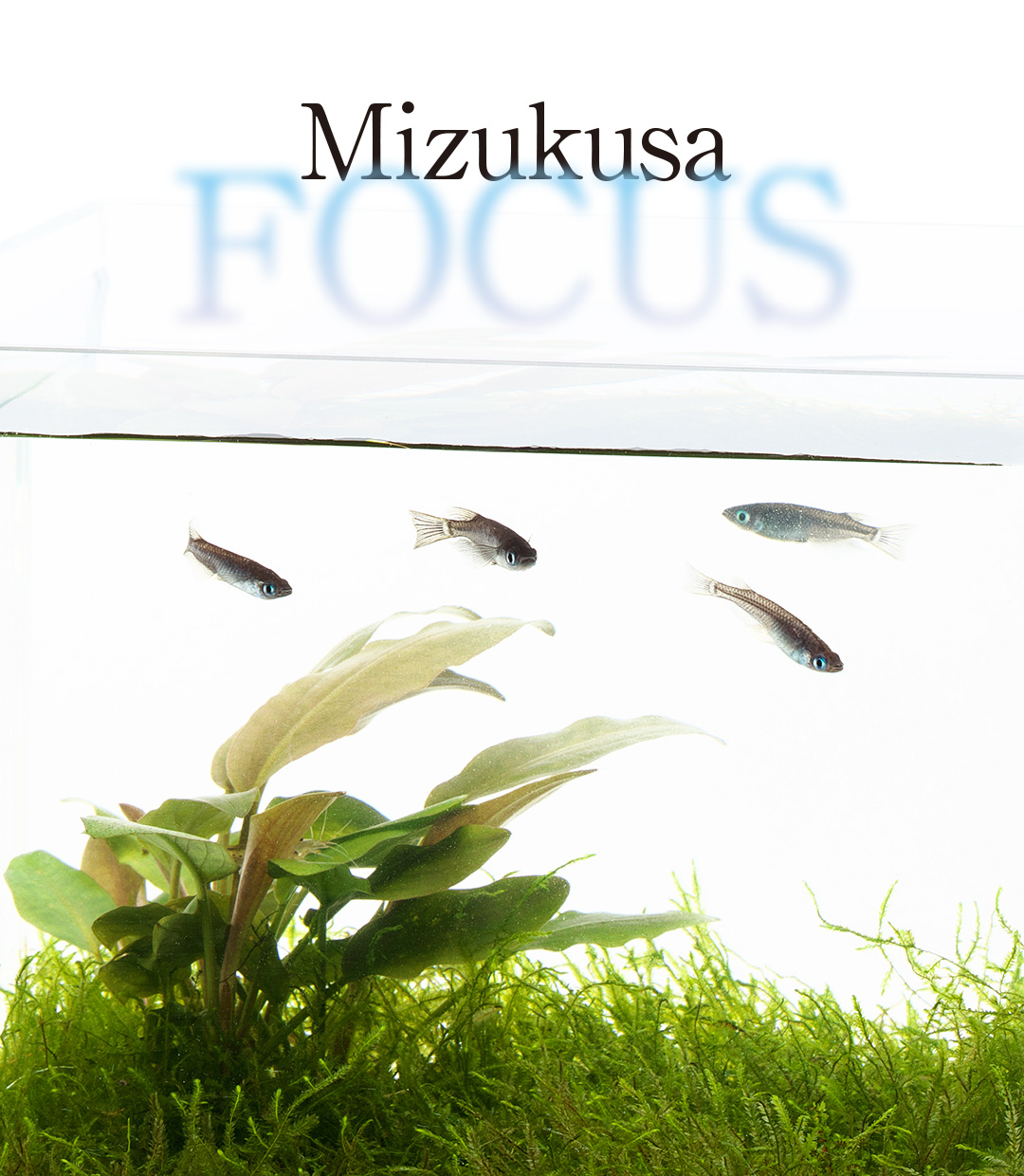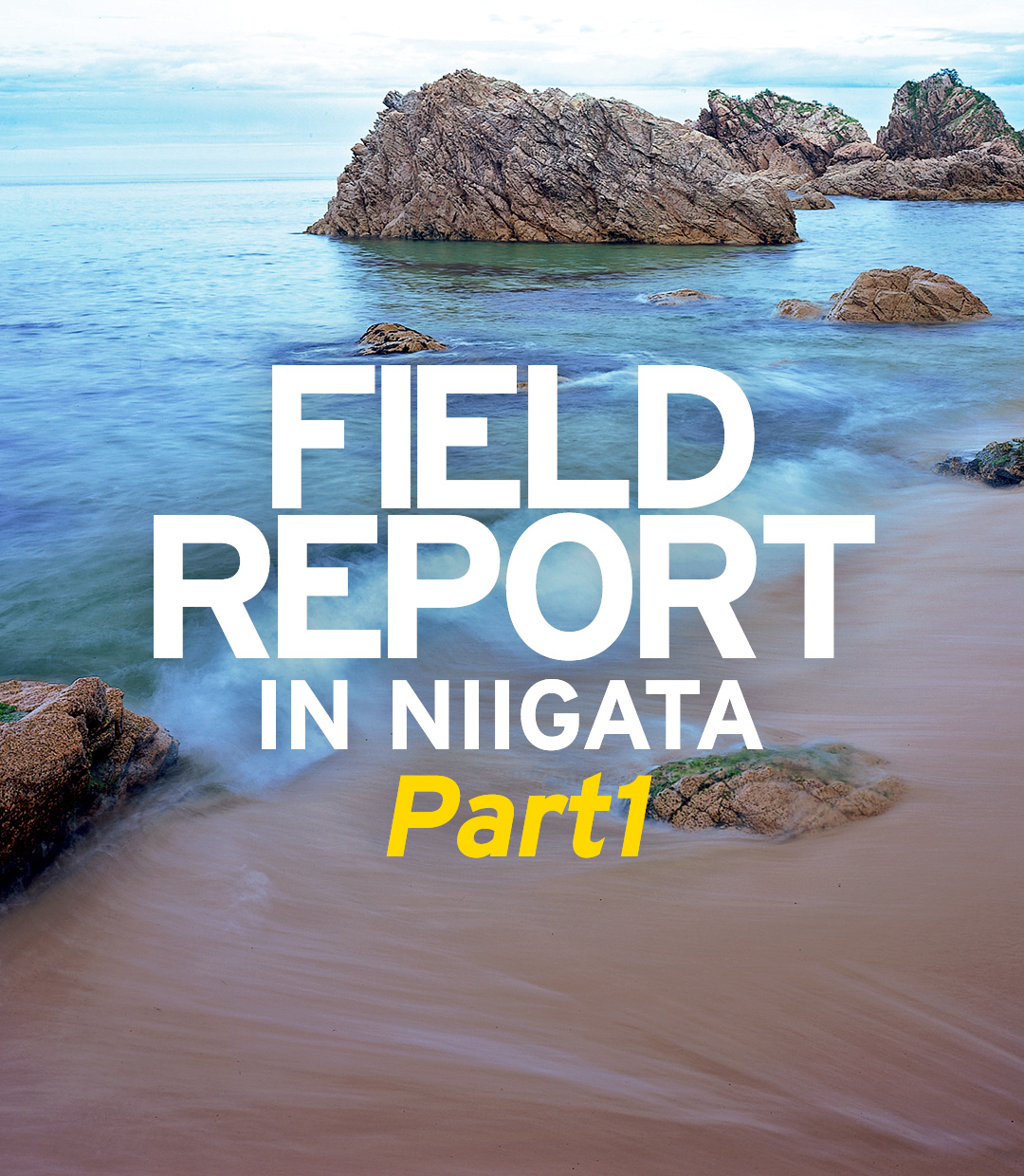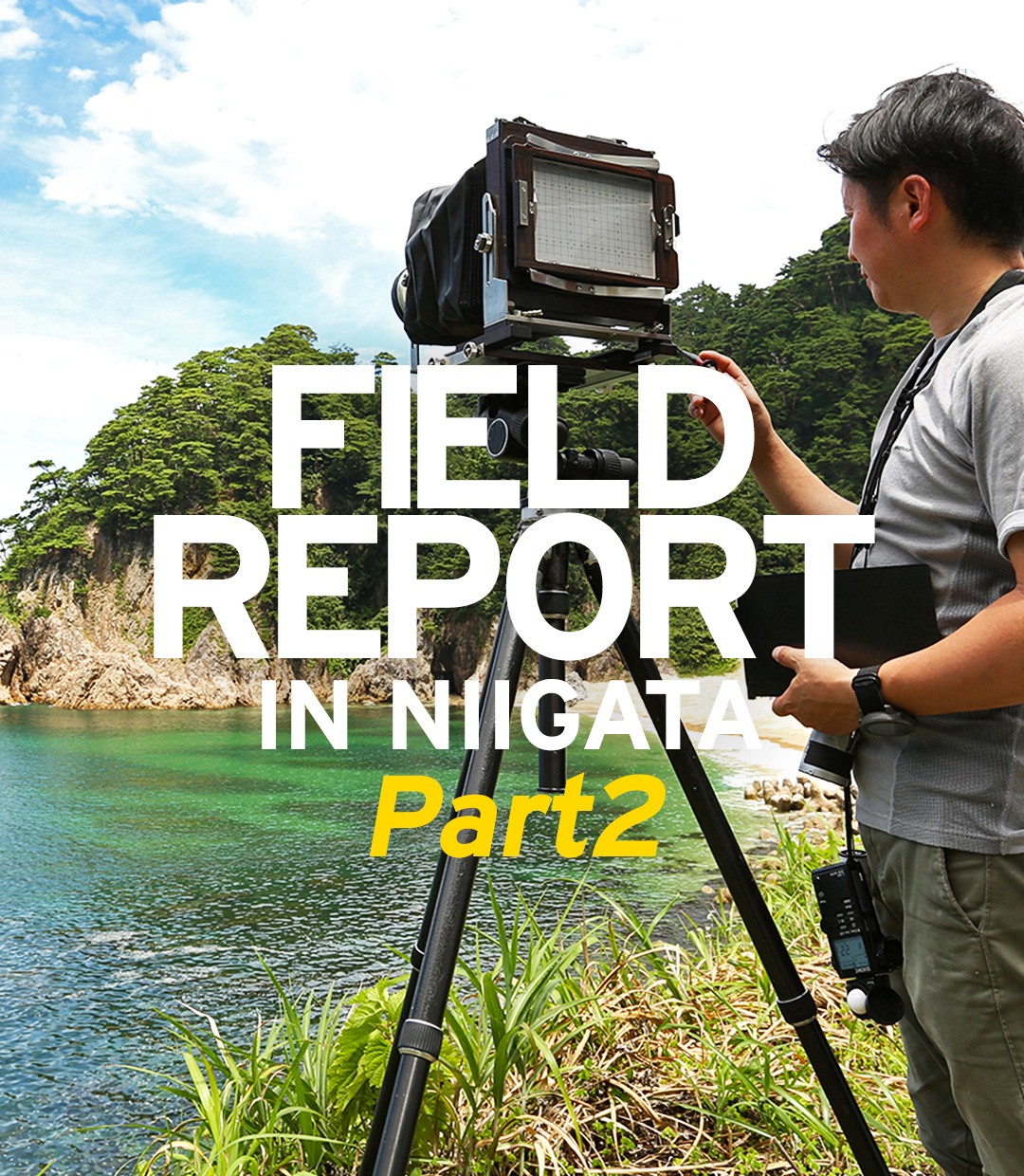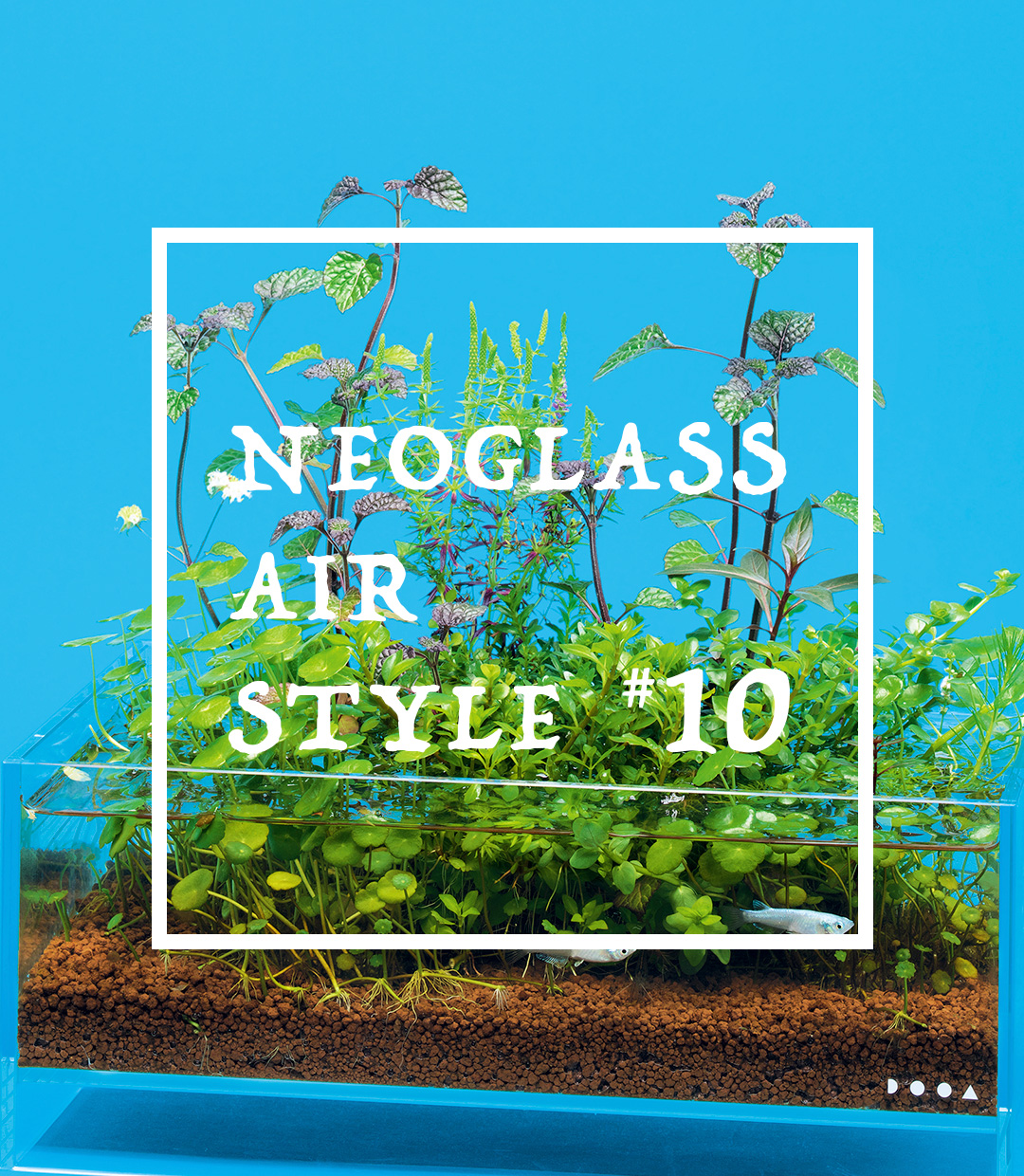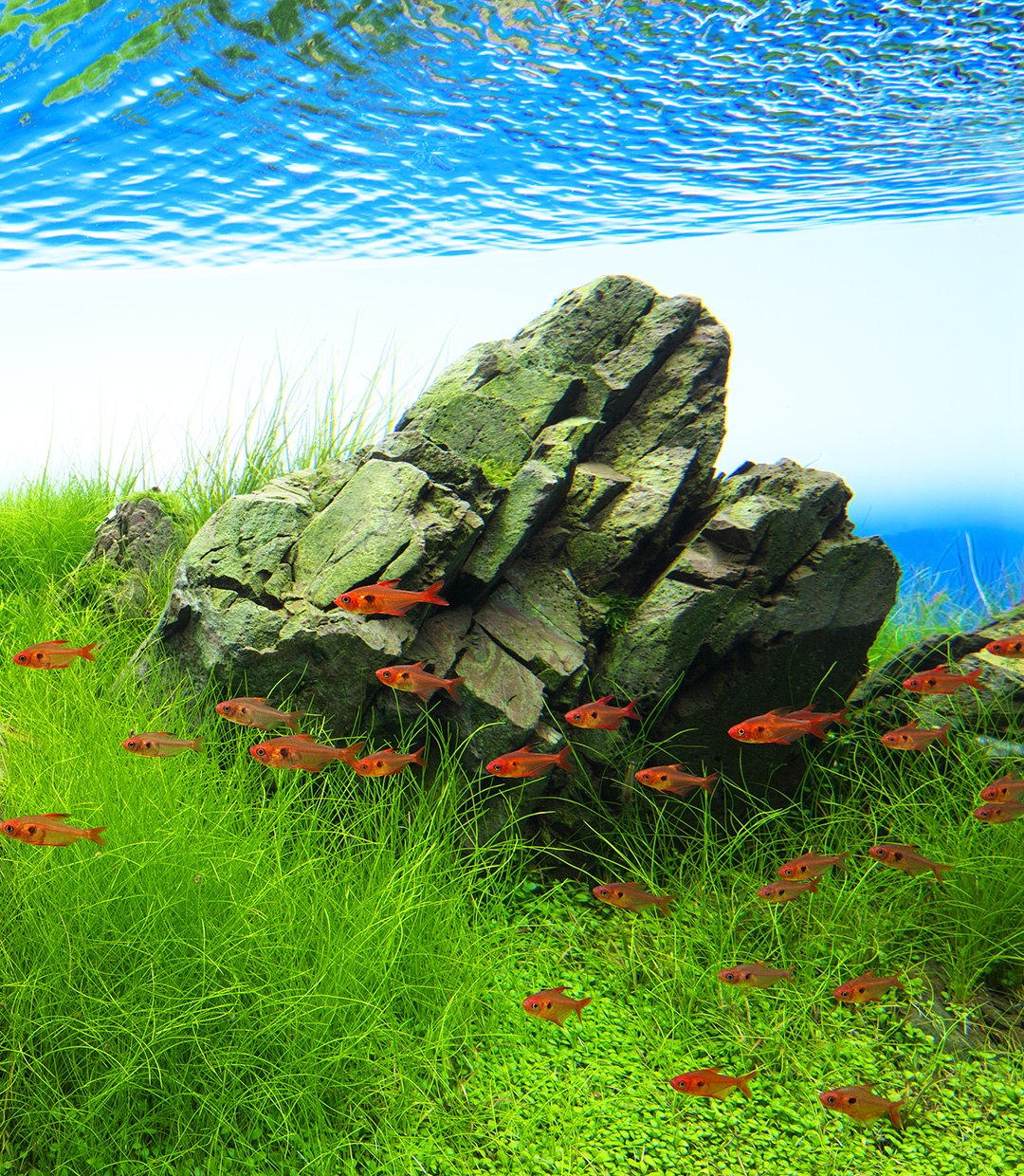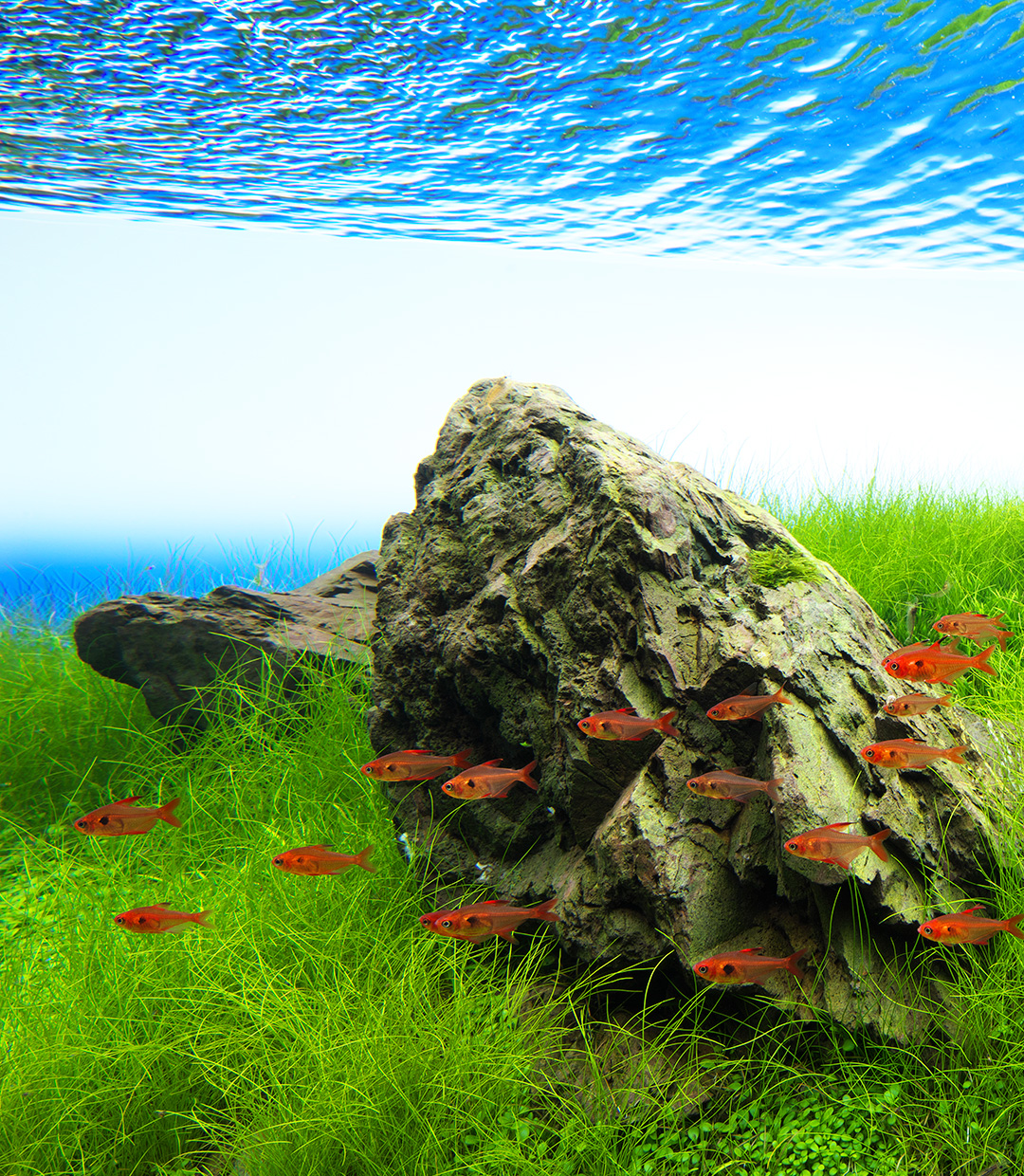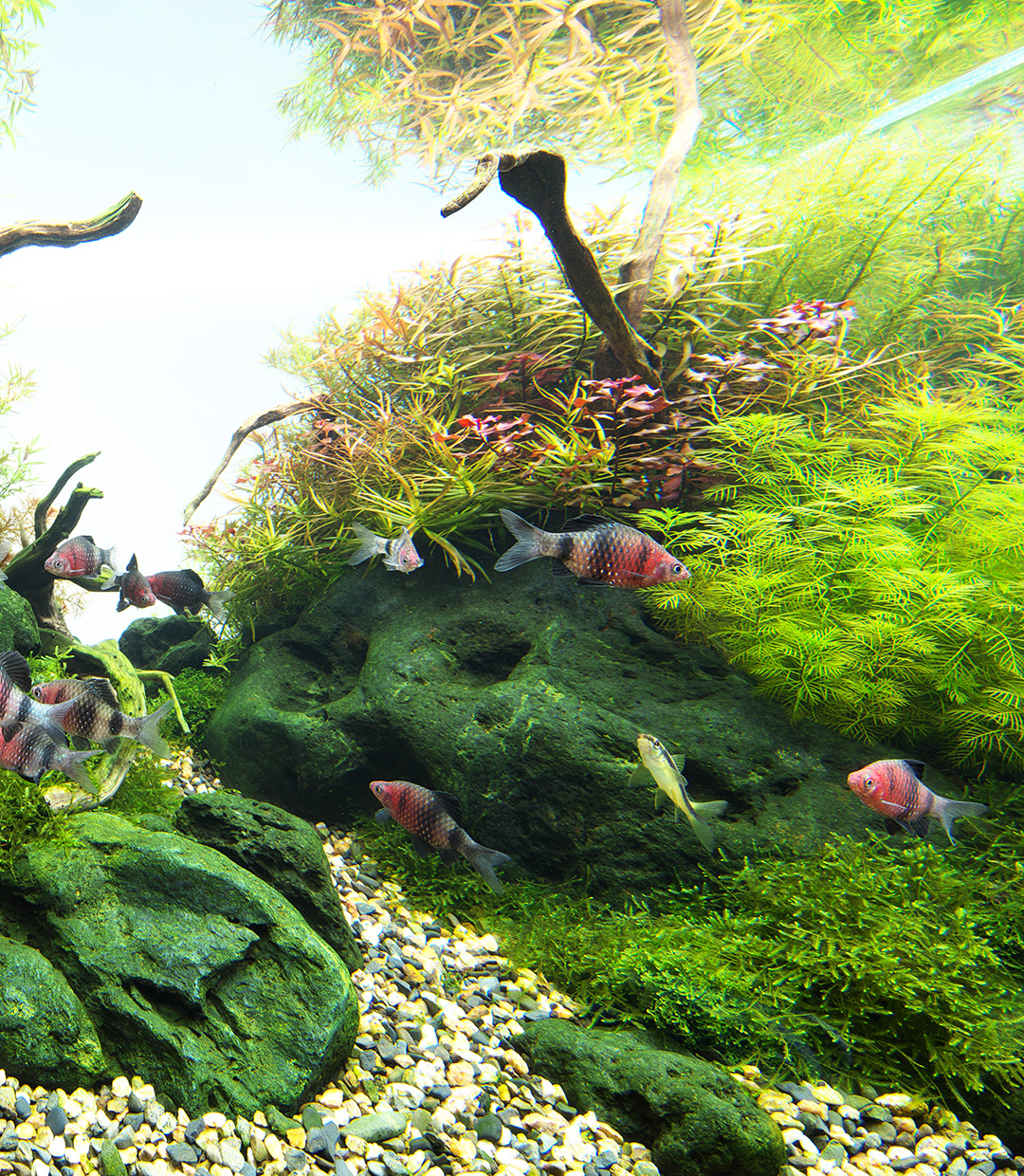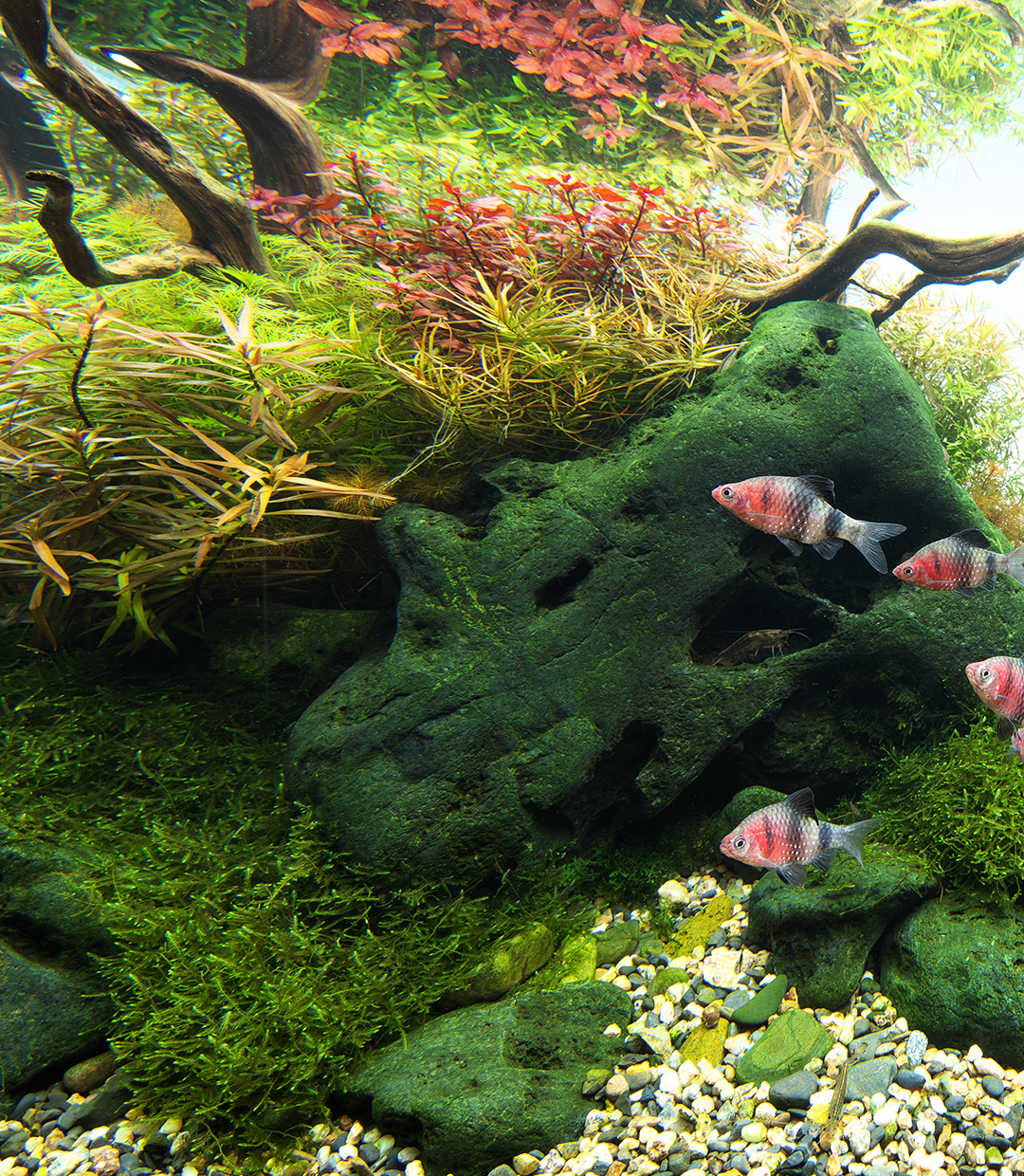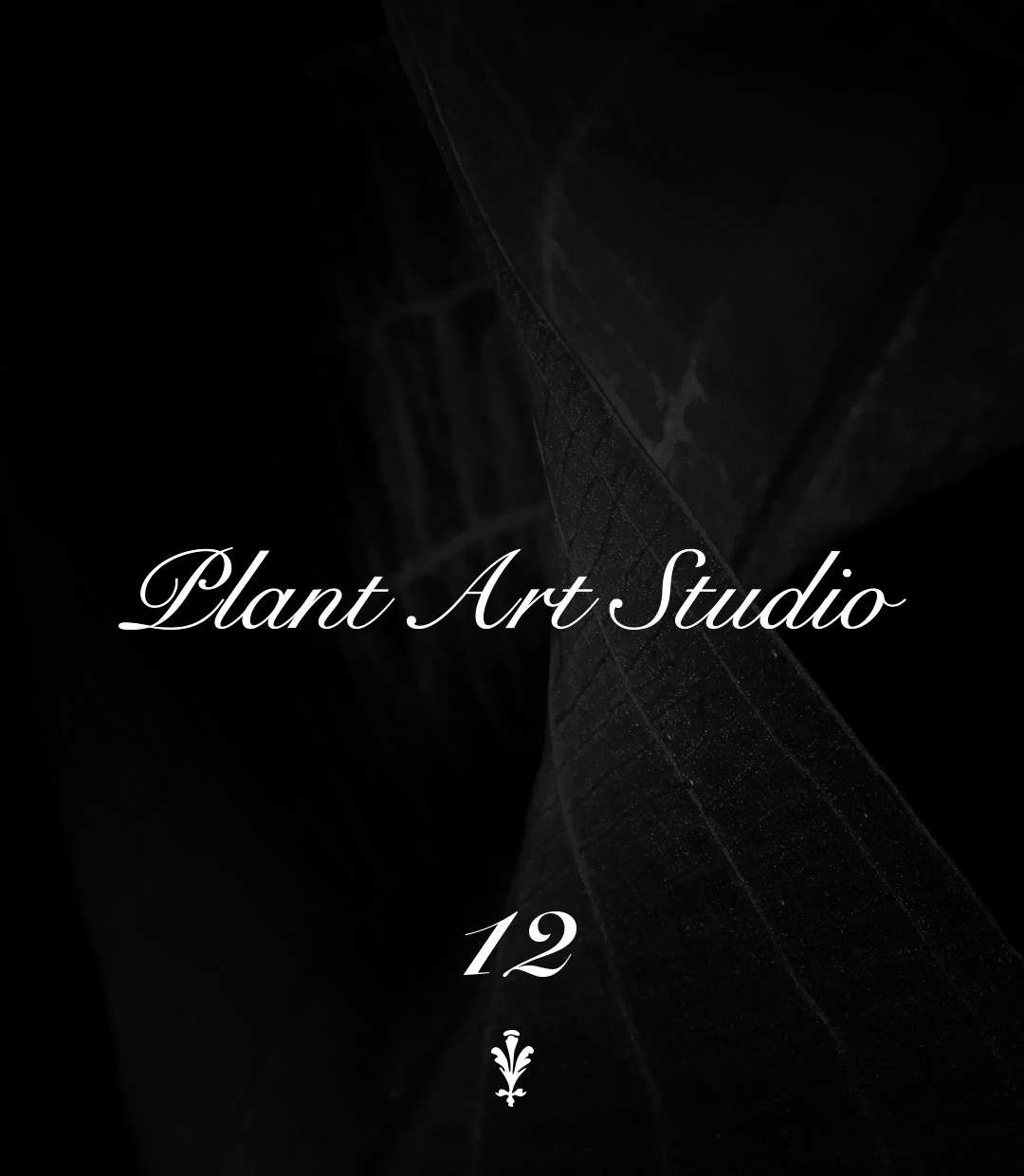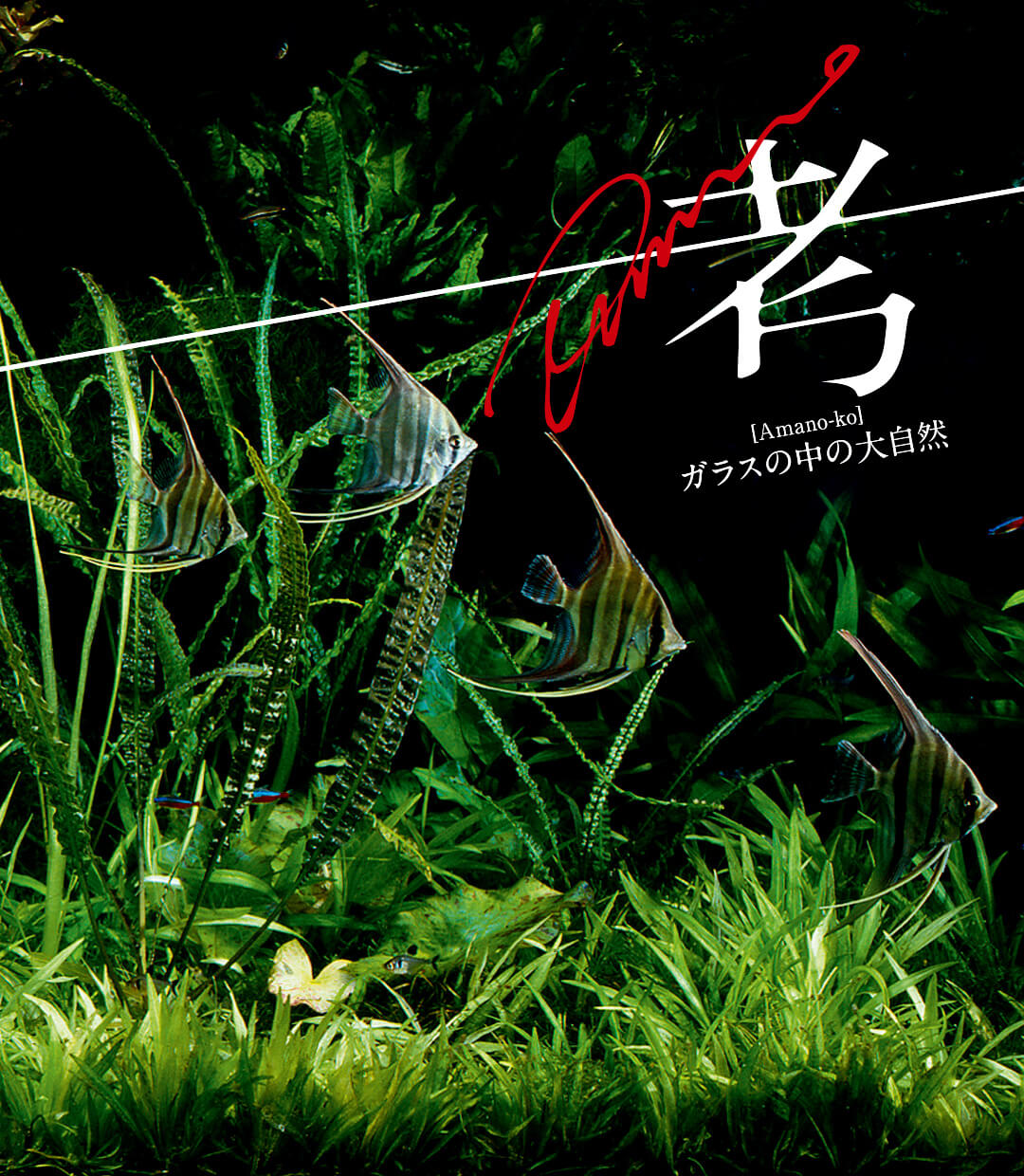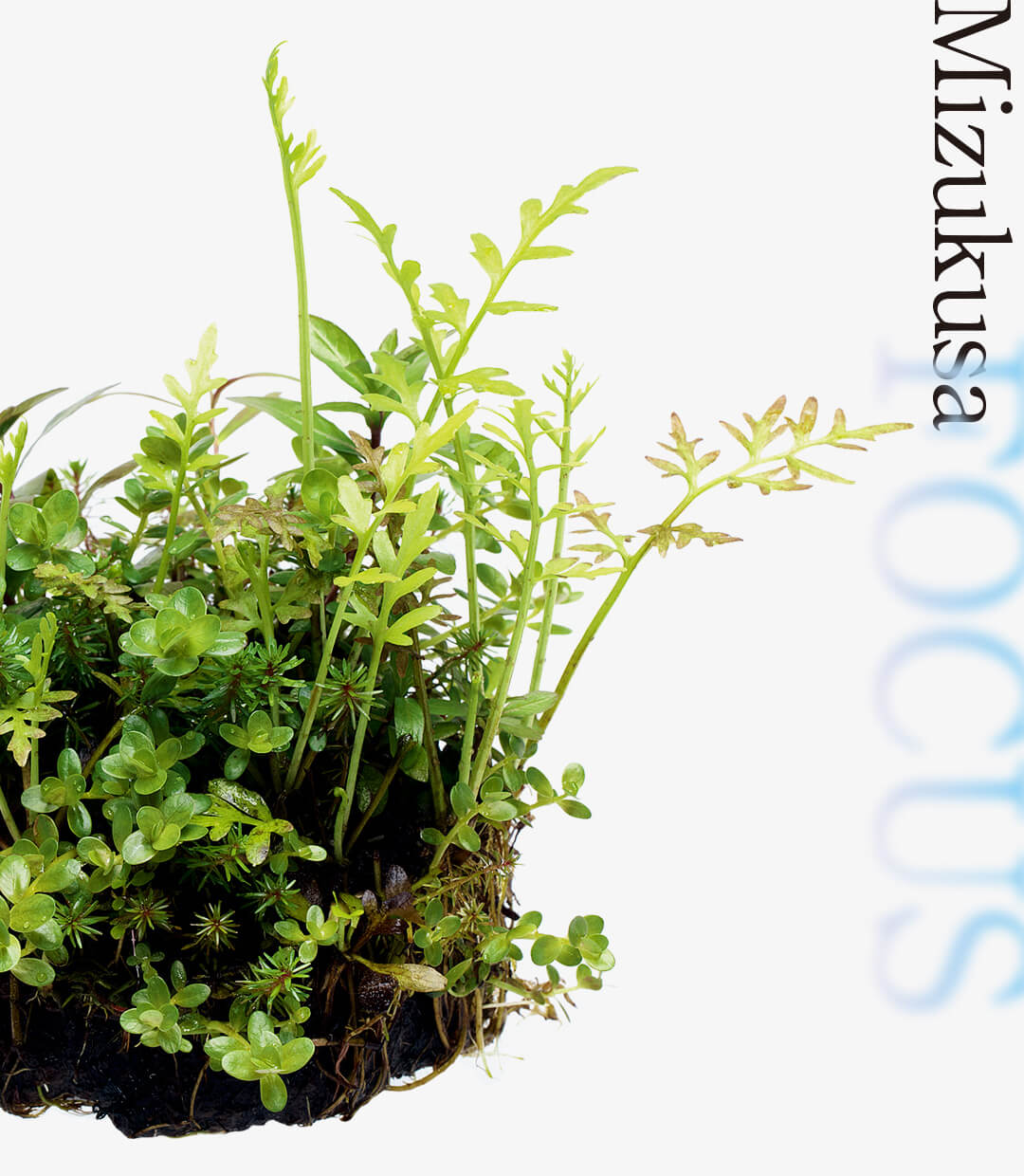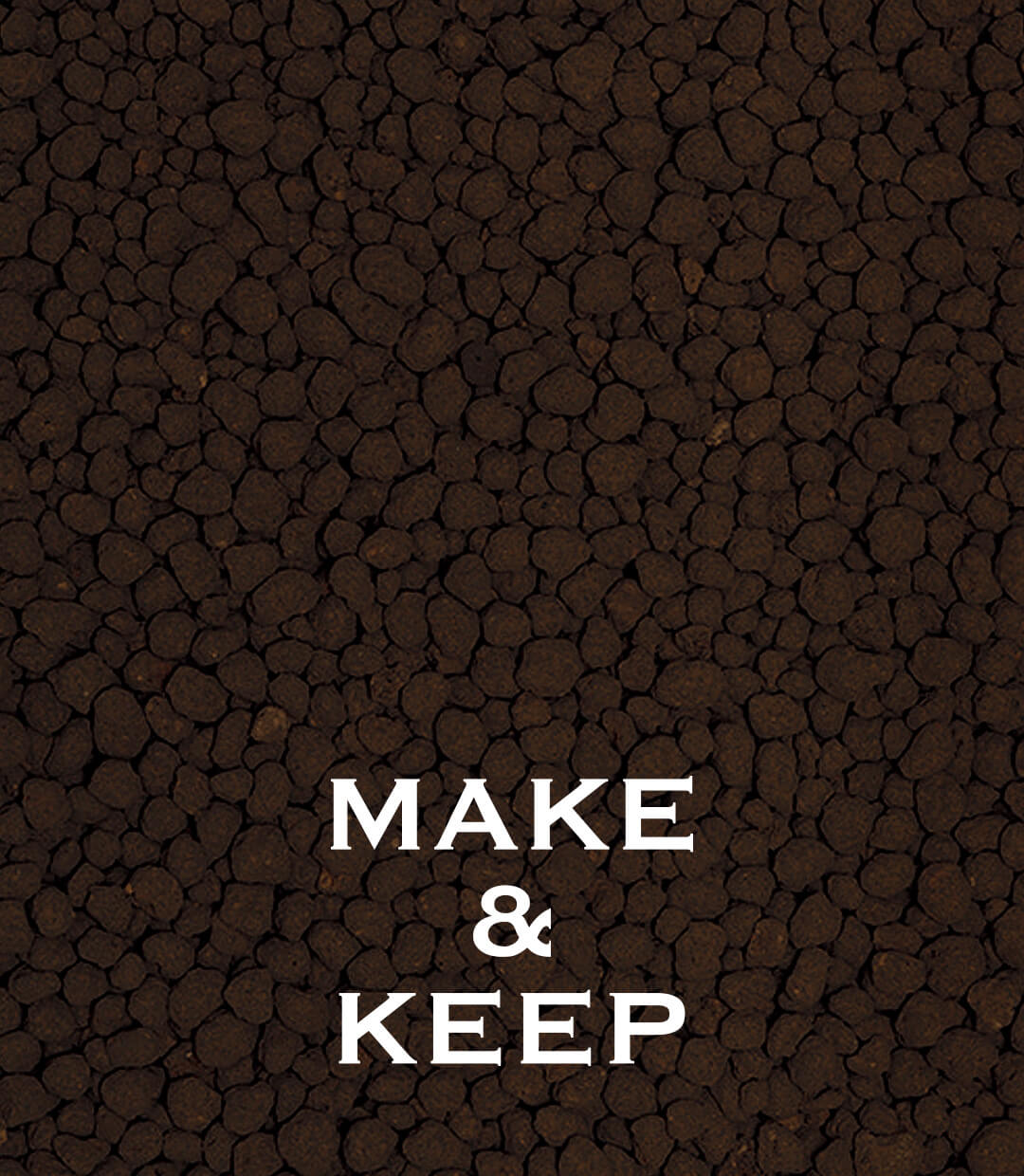NATURE IN THE GLASS – Autumn foliage underwater ~Fall in Japan~ – Part 2
A new style of Iwagumi aquascape,
learned from the valley in late autumn
KEY POINT of layout composition
The basic attitude of Nature Aquarium is to “learn from nature”, but it is very difficult to directly refer to actual nature. If you try to faithfully reproduce the terrestrial landscape, the layout will look like a diorama, leaving you away from the philosophy of Nature Aquarium, which expresses nature as an aquascape. The scenery such as Nakatsugawa Valley that I visited this time is relatively easy to use as a reference for the layout as a landscape created by the flow of water. Since driftwood is also used, it is not a pure Iwagumi layout, but I think you can see it as a new style Iwagumi layout.
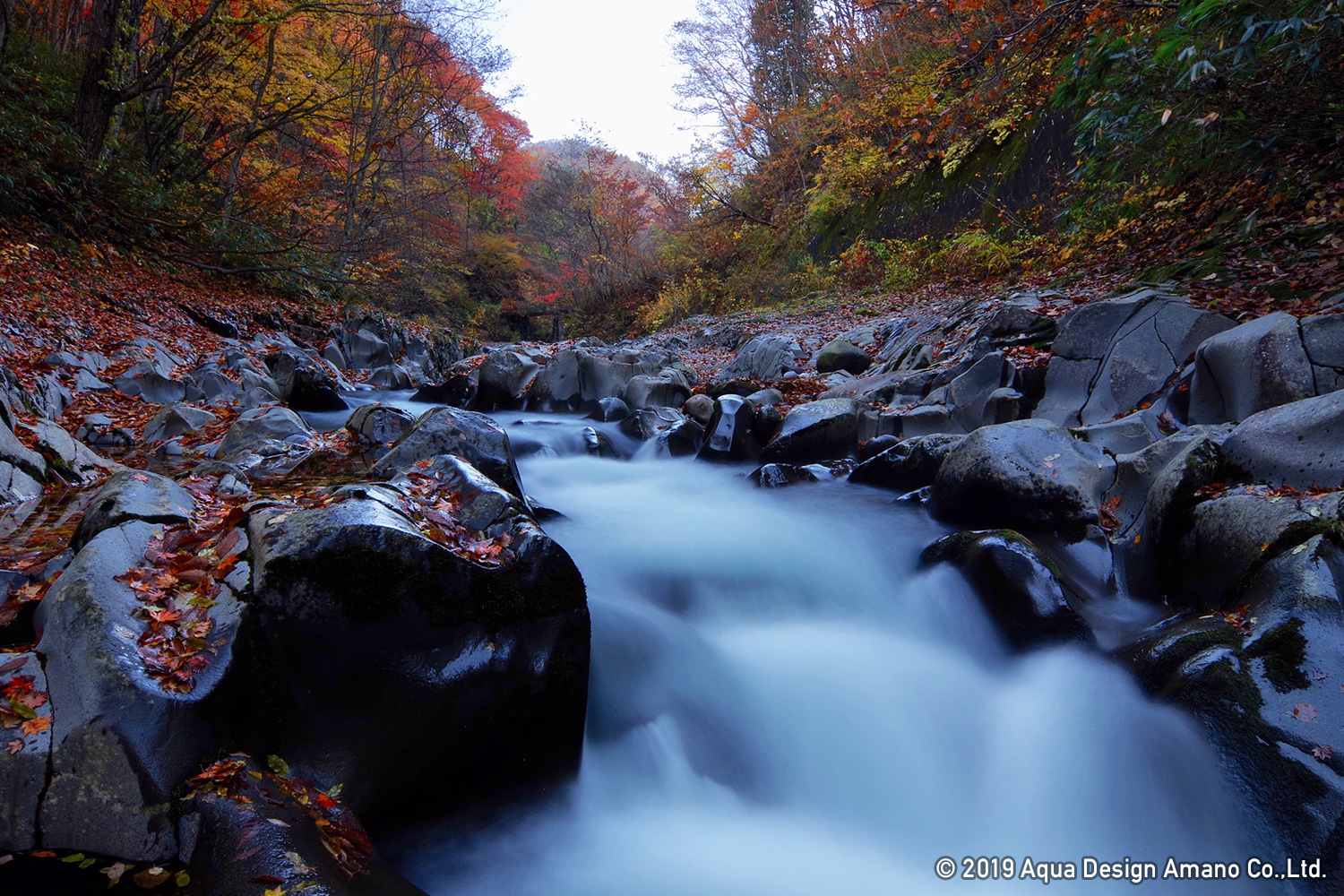
Early November 2018 / Photo by Naru Uchida
Nakatsugawa Valley in late autumn
Nakatsugawa Valley in Urabandai, Fukushima Prefecture is widely known as a landscape photographic point due to the beauty of the valley of fresh greenery and colored leaves. We were able to get the inspiration for this aquascape from the scenery of the valley in the late autumn wet in the rain.
Nakatsugawa Valley in Urabandai, Fukushima Prefecture is widely known as a landscape photographic point due to the beauty of the valley of fresh greenery and colored leaves. We were able to get the inspiration for this aquascape from the scenery of the valley in the late autumn wet in the rain.
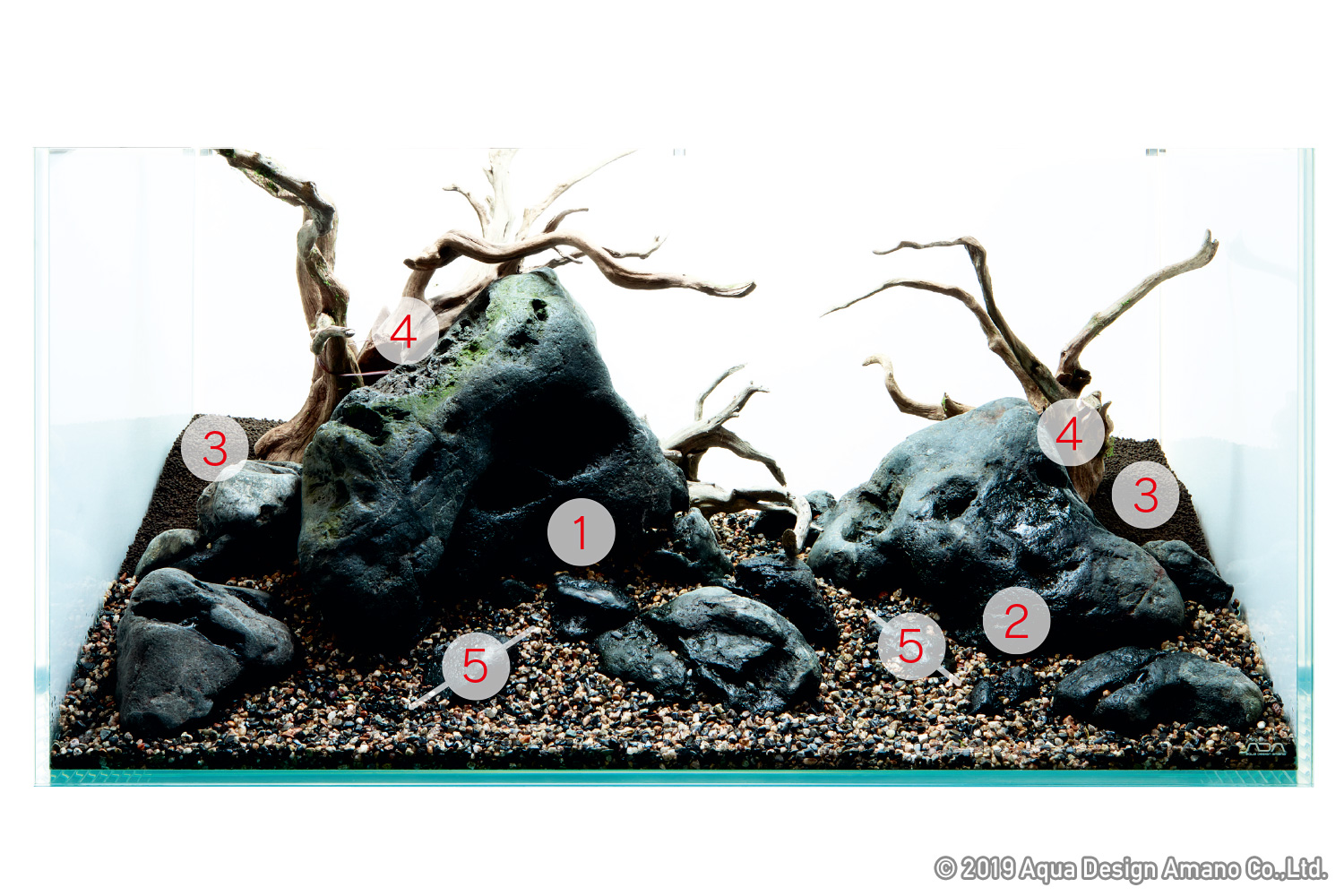
Composition inspired by mountain stream
In a natural mountain stream, the flow of water is tempered by the height difference of the riverbed and collision with stones, and the shape and arrangement of stones change due to the power of the water. The arrangement of stones learned from such a mountain stream was expressed in a W90cm tank. River stones and driftwood are also used in the image of trees that grow along the mountain stream.
In a natural mountain stream, the flow of water is tempered by the height difference of the riverbed and collision with stones, and the shape and arrangement of stones change due to the power of the water. The arrangement of stones learned from such a mountain stream was expressed in a W90cm tank. River stones and driftwood are also used in the image of trees that grow along the mountain stream.
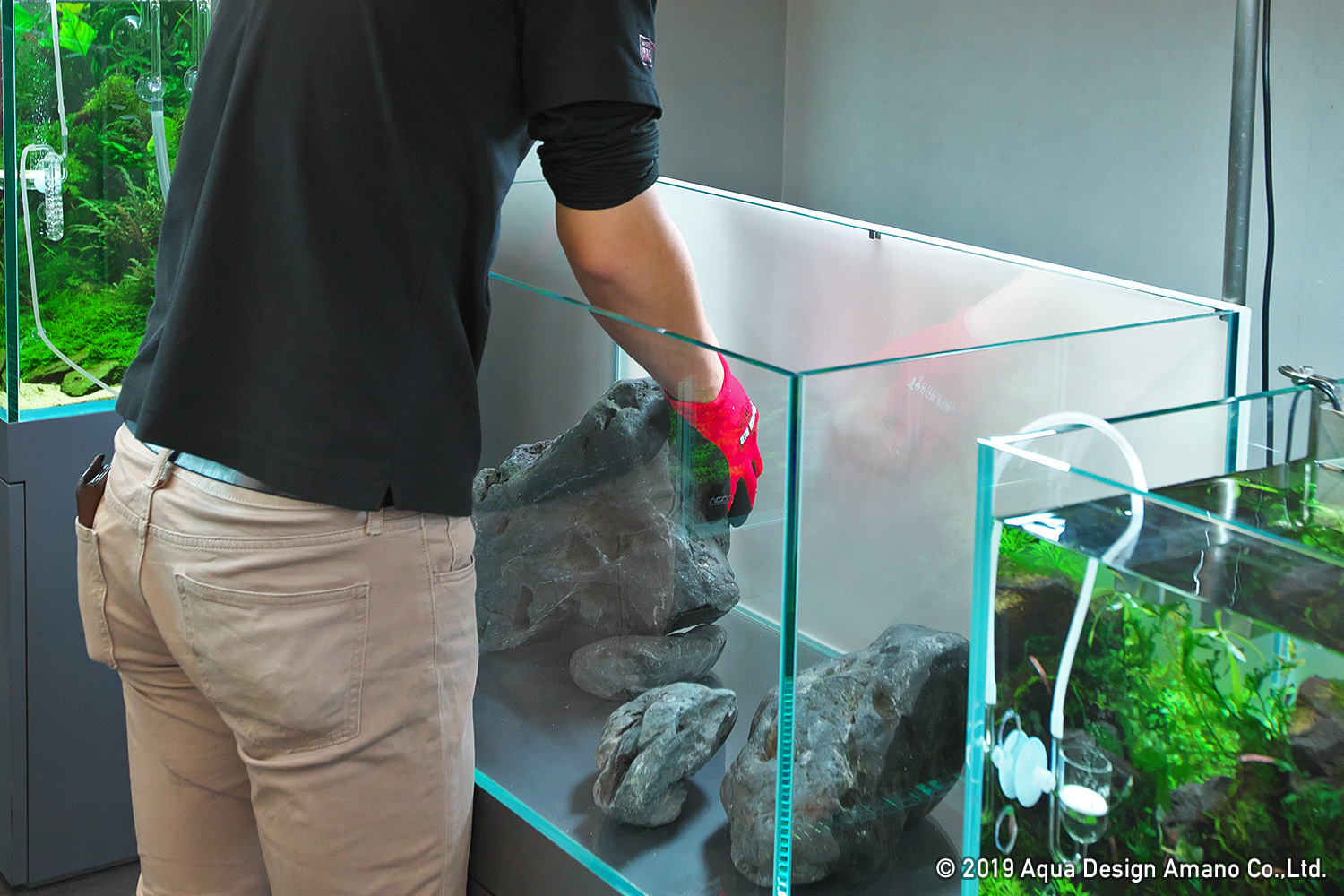
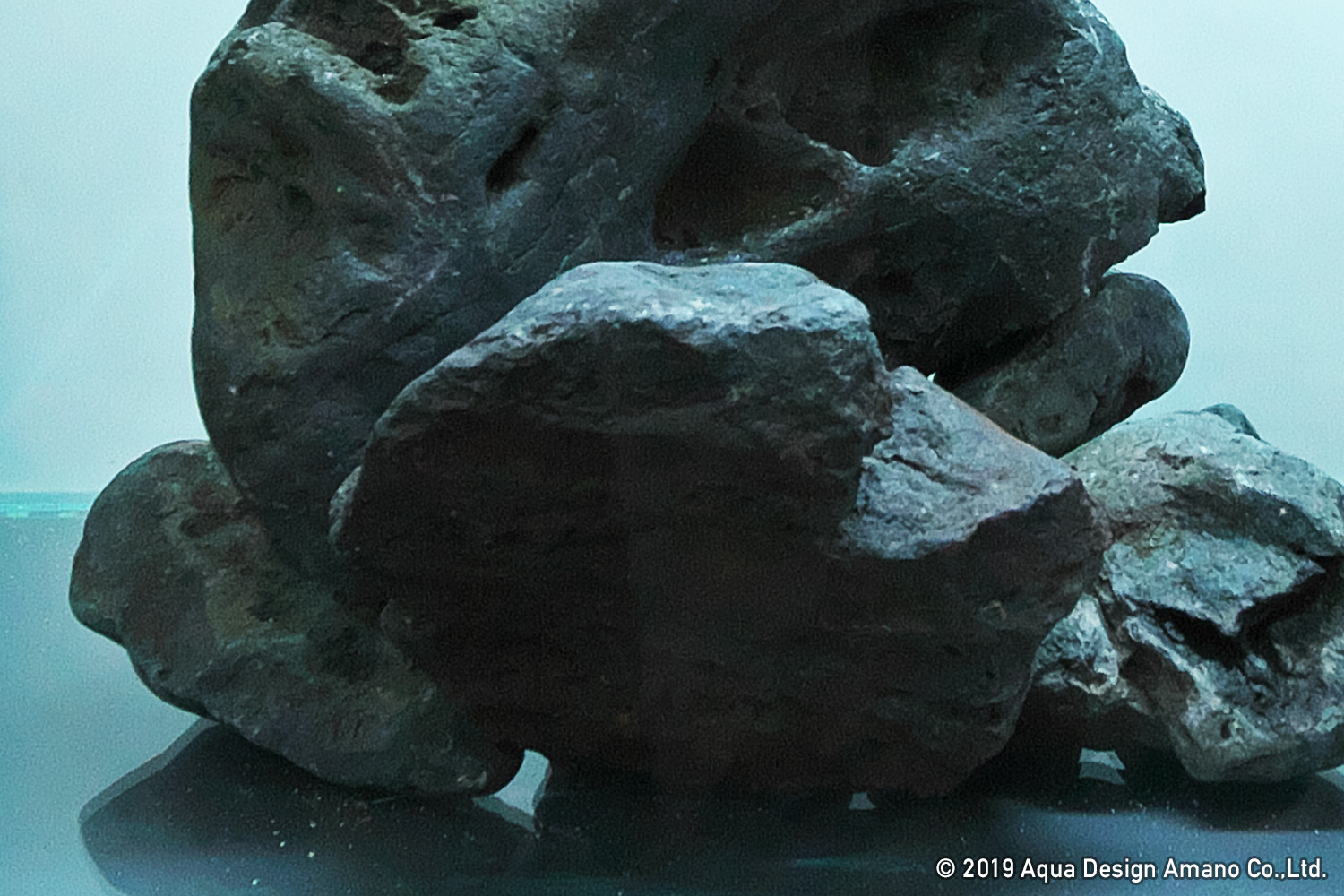
①Arrange the main stone
It is important to arrange the main stone before putting the substrate. The gravel used for the foreground has little particle friction, and if the stone is arranged with the substrate in place, the stone will not be firmly fixed and may collapse.
It is important to arrange the main stone before putting the substrate. The gravel used for the foreground has little particle friction, and if the stone is arranged with the substrate in place, the stone will not be firmly fixed and may collapse.
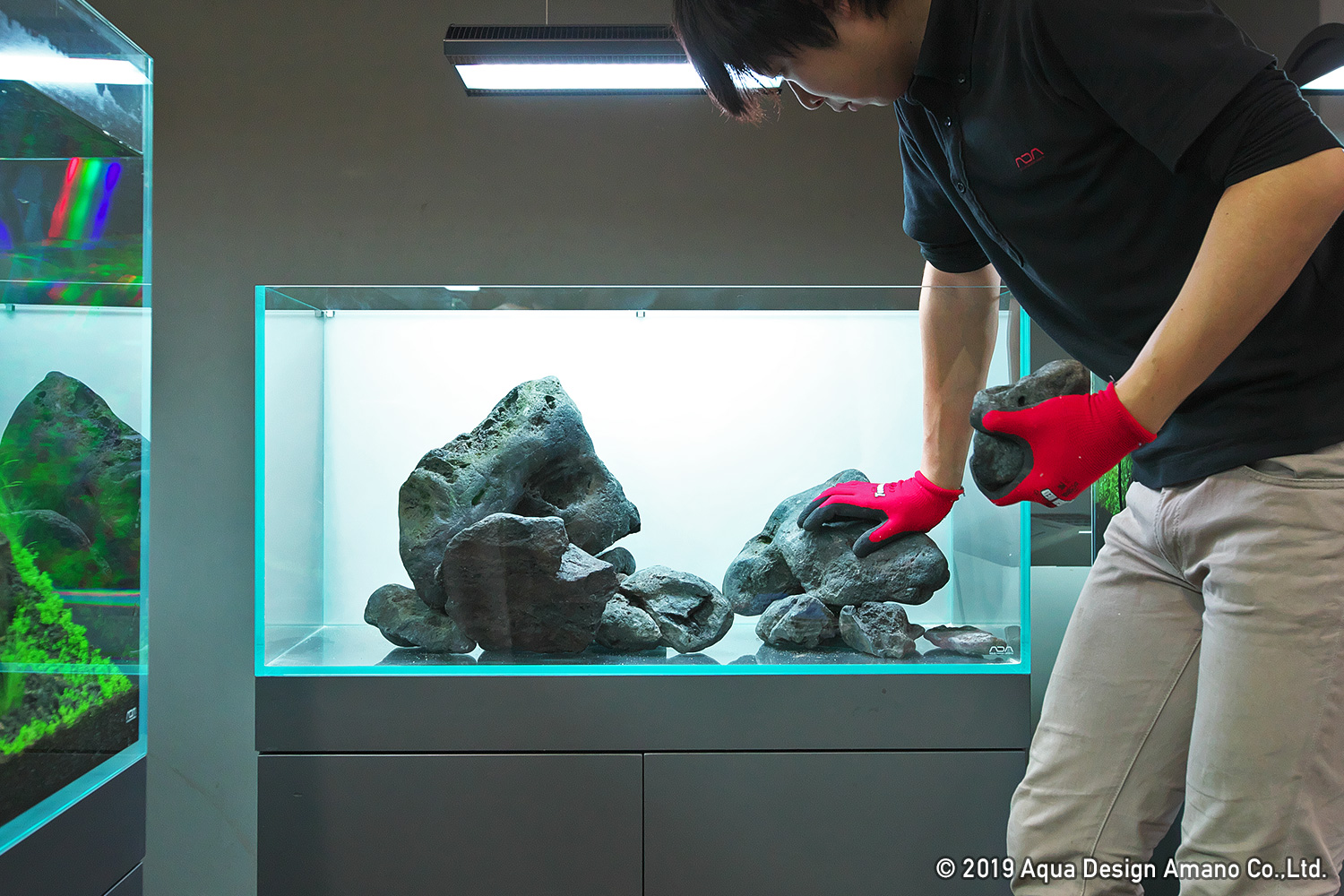
②Concave composition with balance in mind
The composition of this aquascape is a concave shape because I created this in the motif of a valley. The stones are arranged in the order of Oyaishi or main stones, secondary stones and rubble stones, but the indentation called “worm-eaten” is a characteristic of Hakkai Stones. By using similar worm-eaten Oyaishi and secondary stone, a natural sense of unity is born.
The composition of this aquascape is a concave shape because I created this in the motif of a valley. The stones are arranged in the order of Oyaishi or main stones, secondary stones and rubble stones, but the indentation called “worm-eaten” is a characteristic of Hakkai Stones. By using similar worm-eaten Oyaishi and secondary stone, a natural sense of unity is born.
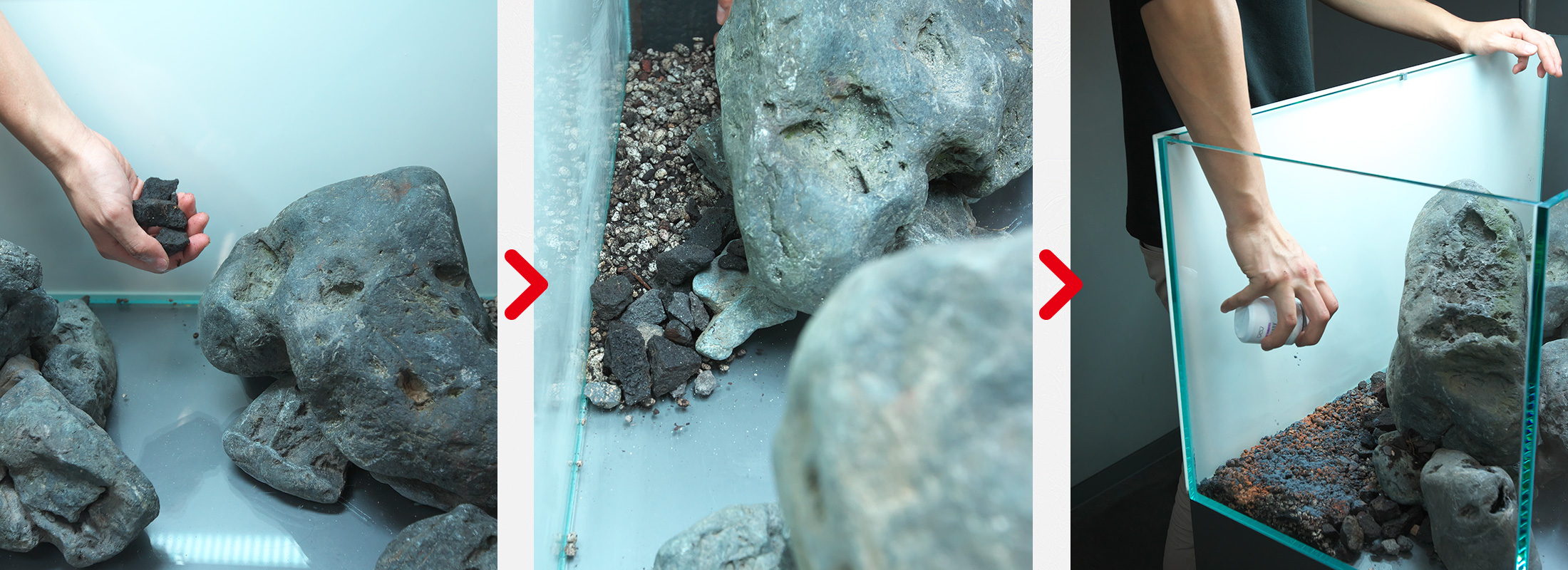
③Spread the substrate
I spread Aqua Gravel on the foreground and Aqua Soil on the background. When laying the gravel and the soil, it is necessary to fill the gap with pebbles firmly so that the soil does not come out.
I spread Aqua Gravel on the foreground and Aqua Soil on the background. When laying the gravel and the soil, it is necessary to fill the gap with pebbles firmly so that the soil does not come out.
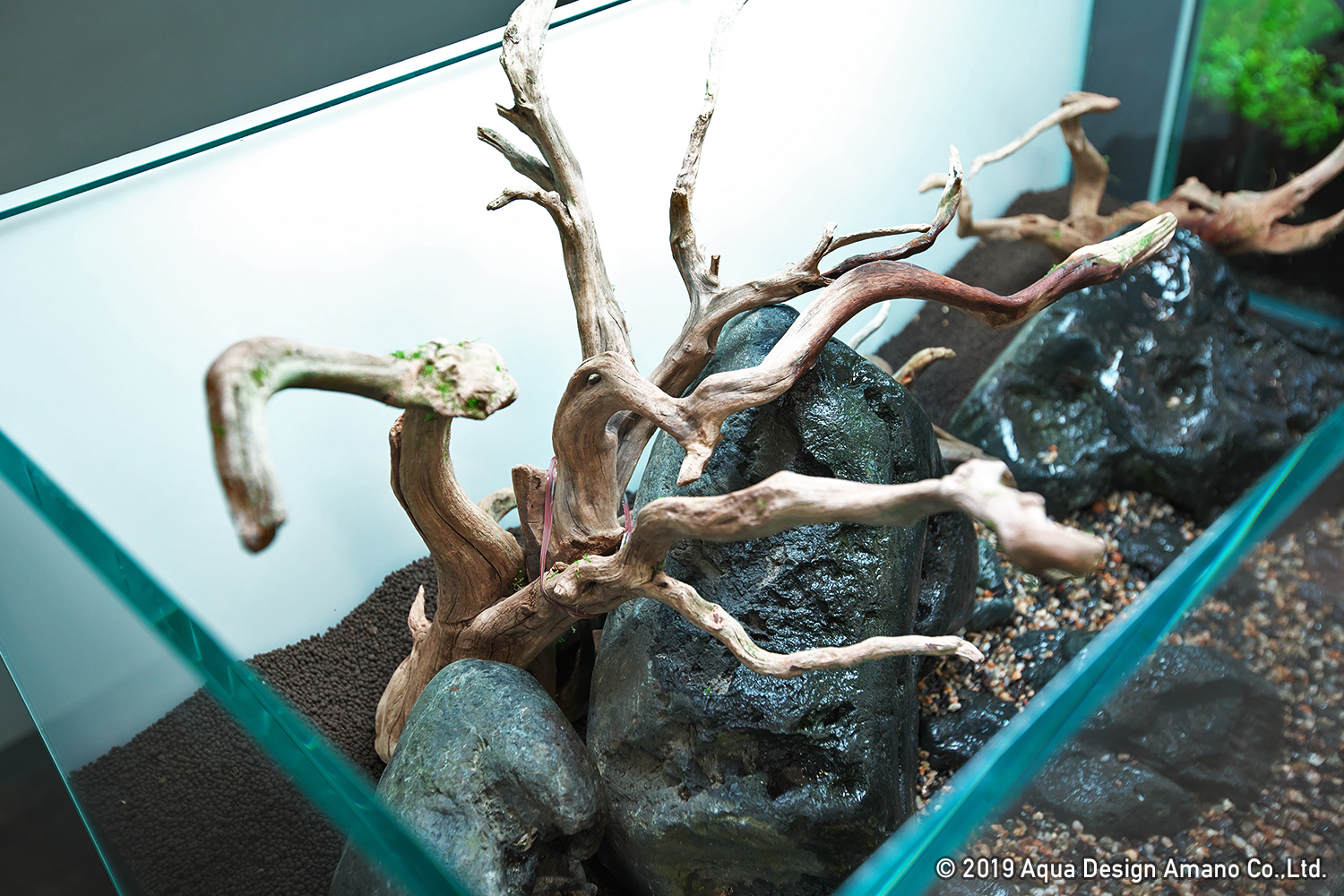
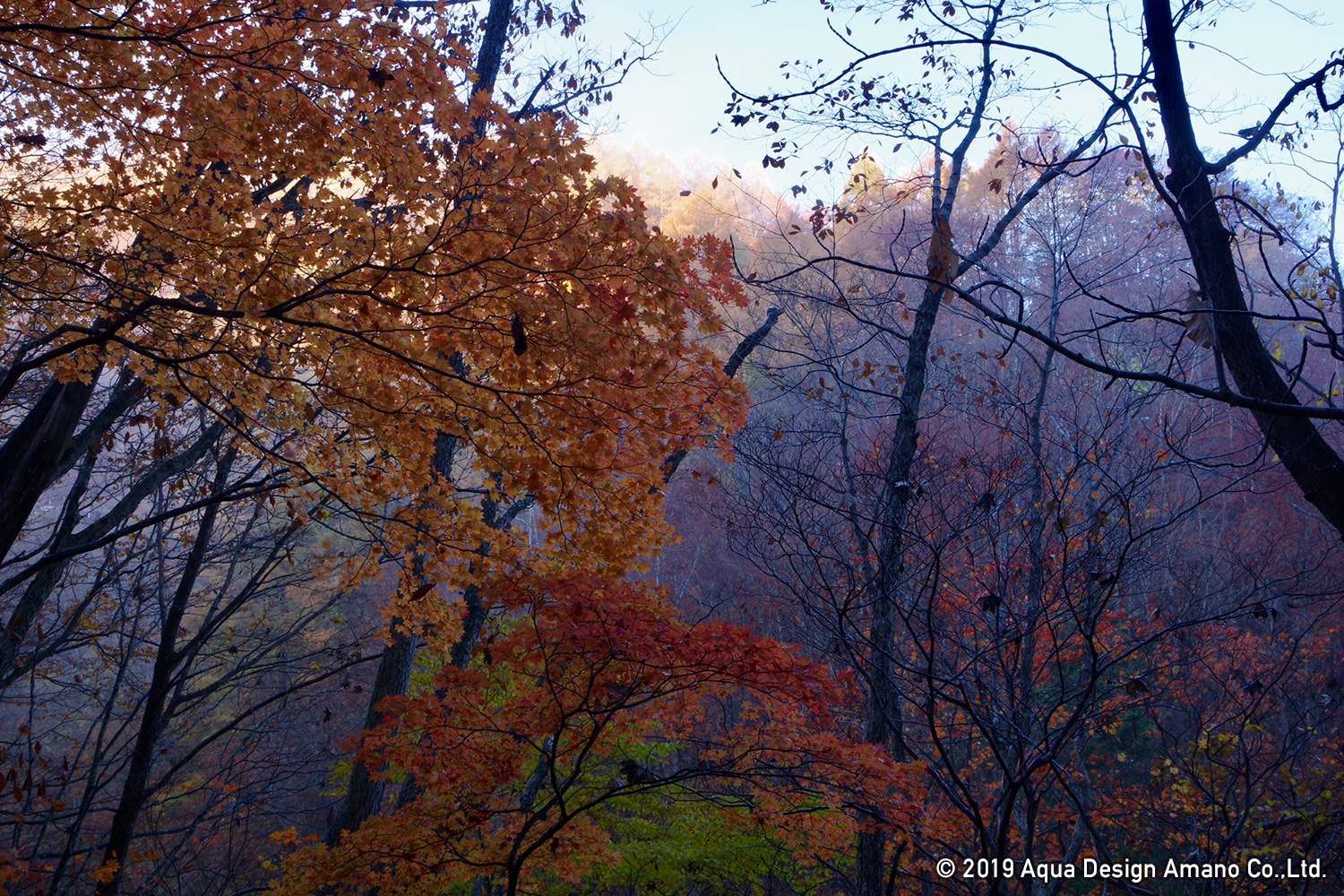
Early November 2018 / Photo by Naru Uchida
④Expressing the valley trees
Branch Wood was placed behind the Iwagumi. I wanted to express a tree of autumn when the number of leaves decreased due to fallen leaves, so I didn’t dare to attach Willow Moss on driftwood.
Branch Wood was placed behind the Iwagumi. I wanted to express a tree of autumn when the number of leaves decreased due to fallen leaves, so I didn’t dare to attach Willow Moss on driftwood.
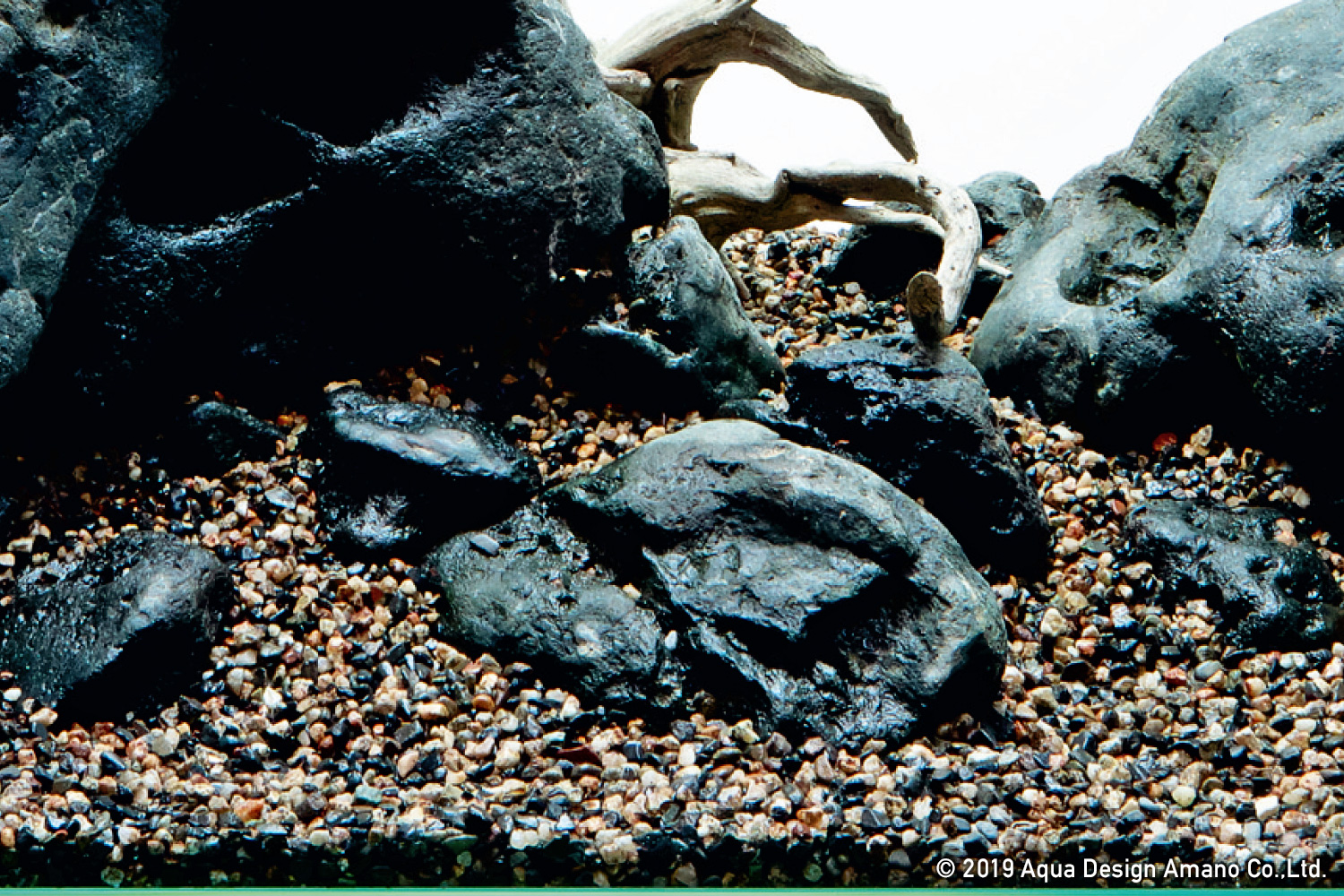
⑤Surrounding stones and Aqua Gravel
By arranging the stones, the decorative sand draws a figure of reverse V-shape, and the foreground is hard to become monotonous due to the intrusion line. In recent years, there are few aquascapes using Aqua Gravel as decorative sand, so this time we use it intentionally to express the natural feeling of the riverbed of the mountain stream.
By arranging the stones, the decorative sand draws a figure of reverse V-shape, and the foreground is hard to become monotonous due to the intrusion line. In recent years, there are few aquascapes using Aqua Gravel as decorative sand, so this time we use it intentionally to express the natural feeling of the riverbed of the mountain stream.
